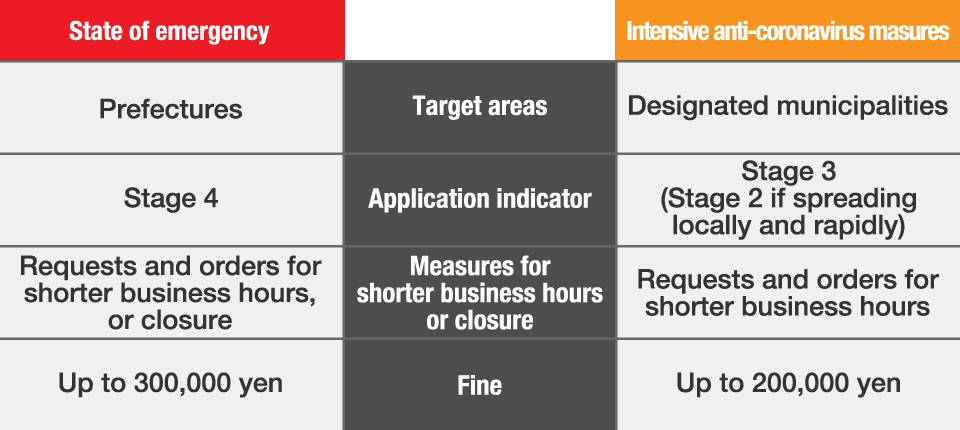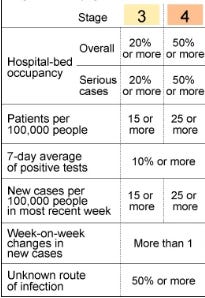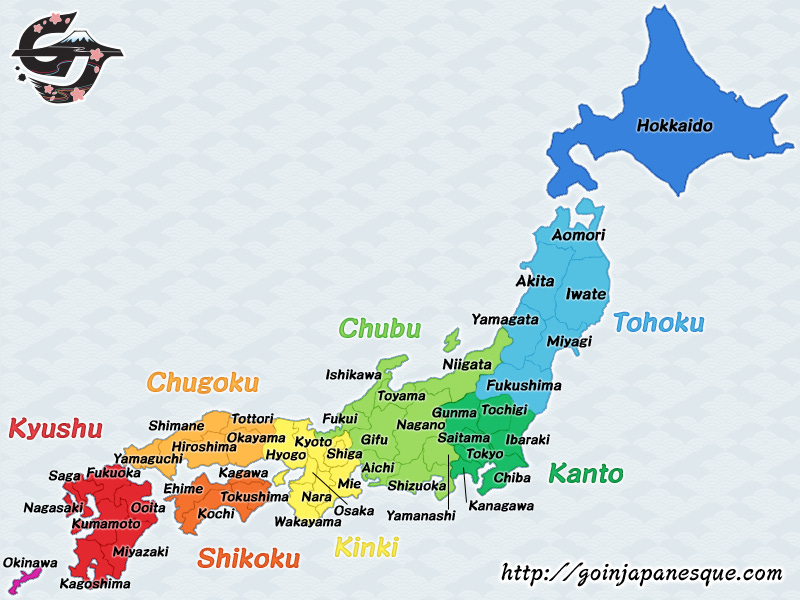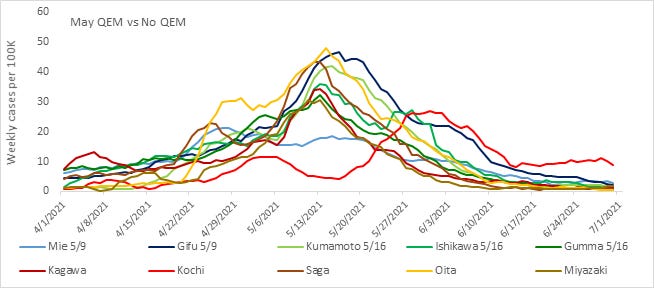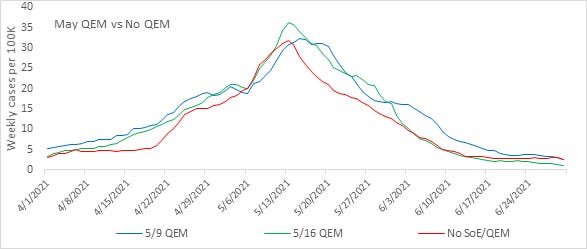While Japan’s main urban centers were under the third state of emergency, several governors of less populous prefectures decided to jump on the early-closure bandwagon by putting parts of their prefectures under intensive anti-coronavirus measures, aka, quasi-emergency measures (QEM), referred to in Japanese as Mambo. This basically involved asking bars and restaurants to only open between 11:00 and 20:00 without offering alcohol or karaoke.
In case you were wondering about the differences between Stages 3 and 4, here they are.
In May, five prefectures applied QEMs: Mie and Gifu on May 9th and Ishikawa, Gumma, and Kumamoto on May 16th. Meanwhile, five prefectures had Stage 4 case rates for over one week but didn’t bother introducing QEMs or declaring a state of emergency: Kagawa, Kochi, Saga, Oita, and Miyazaki. Comparing case rates among these prefectures allows to see whether ordering early closures and banning booze actually have an effect. Since emergency and quasi-emergency measures are implemented on the basis of weekly reported cases per 100,000 people, that’s the metric used here for comparison.
A map of Japan might come in handy at this point. Look mainly at Chubu (Ishikawa, Gifu), Kyushu (Kumamoto, Saga, Oita, Miyazaki), and Shikoku (Kagawa, Kochi).
So what were the results?
And when the prefectures are split into separate categories, the results look like this.
If QEMs were a drug, they’d never be authorized.
Data available from here https://www3.nhk.or.jp/news/special/coronavirus/data/




